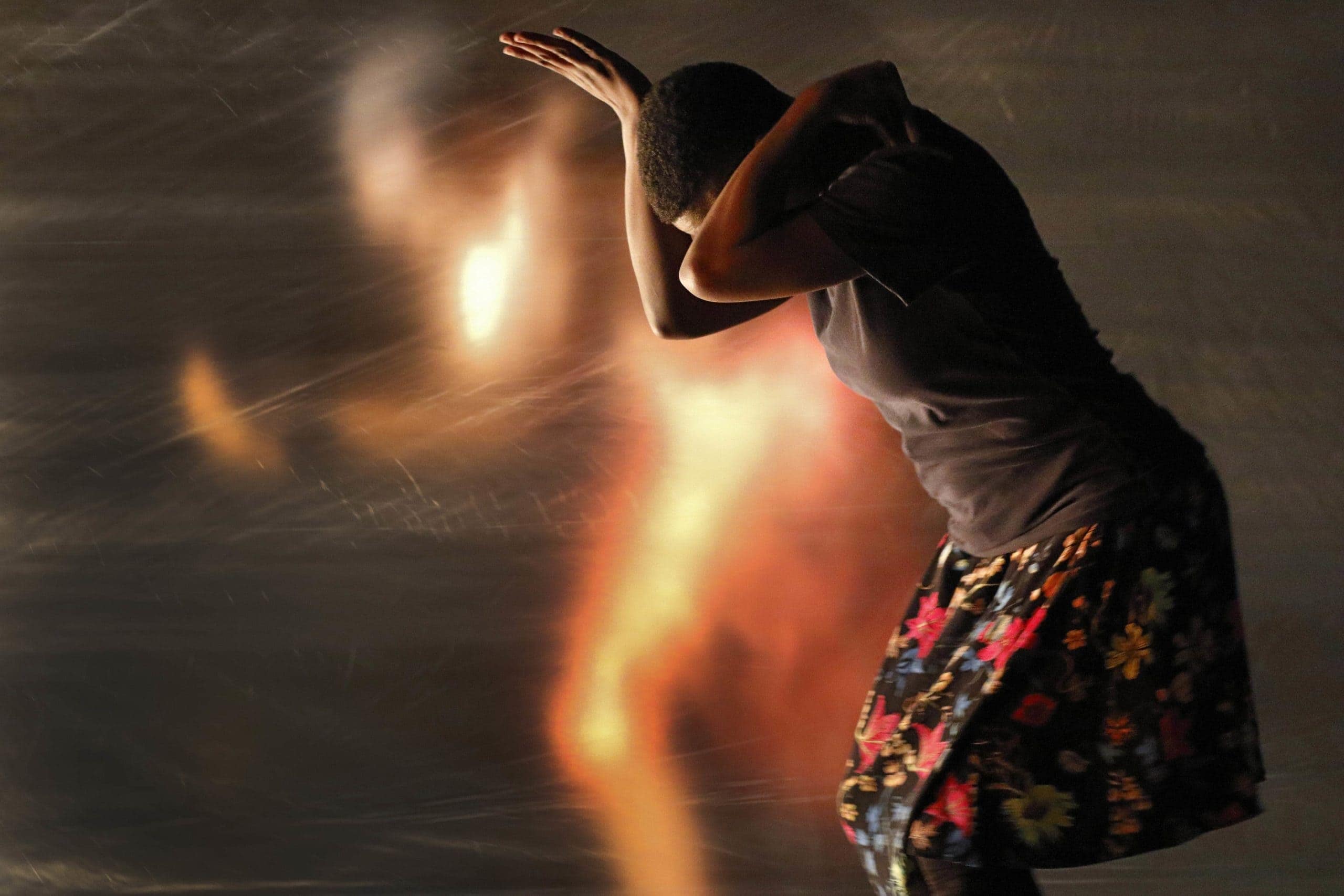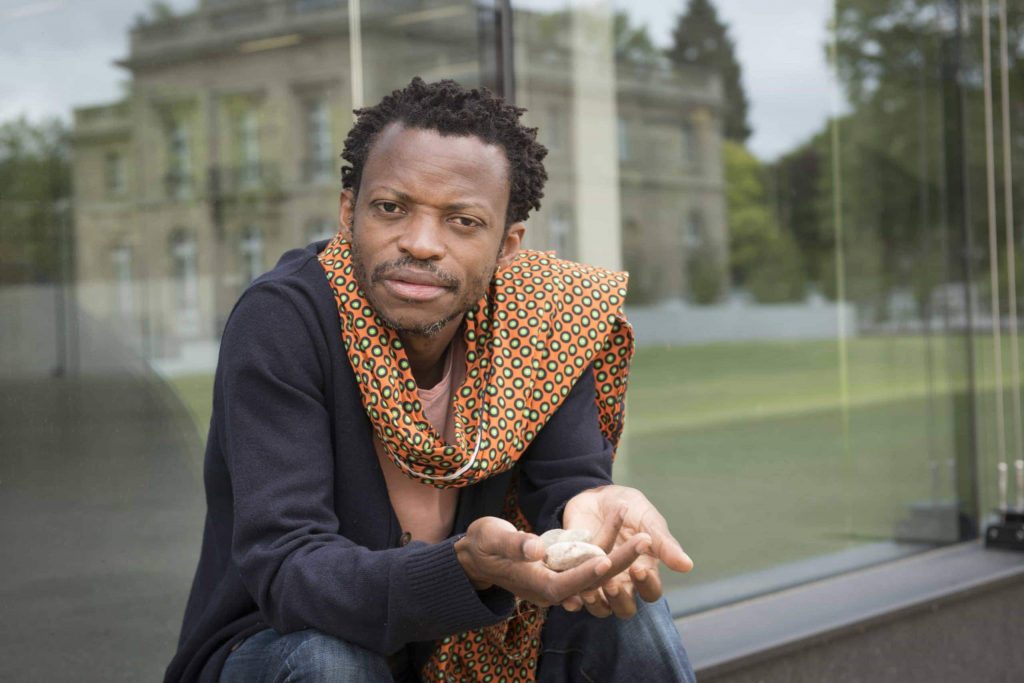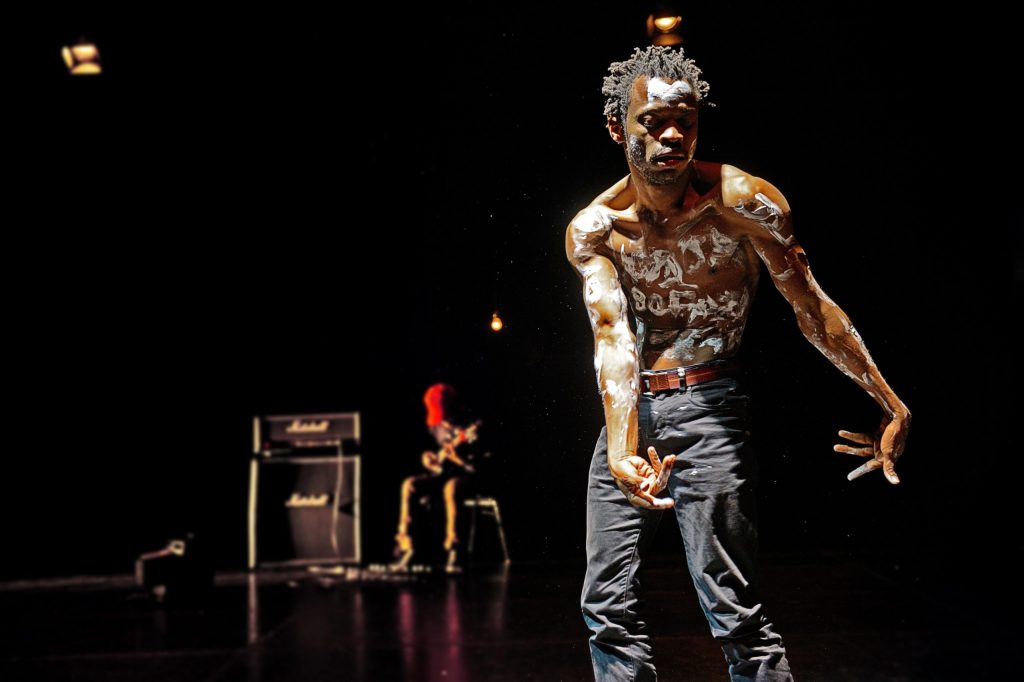
History is a tricky thing. So often it’s described as a story told by the victors, to the point where it’s easy to forget that it isn’t that simple, or clean. History is messy, full of conflicts – both military and otherwise – and the darker legacies of it can be seen in art that explores themes of colonization. This kind of work shines a light on the elements of the past that are so often ignored to make a historical narrative cleaner, and easier for certain people to process.

The work of Fautsin Linyekula, and Tanoa Sasraku (available online through the Tate website and Lux Gallery respectively) refuses to adhere to a clean, homogenous view of history, exploring the often troubling legacies of the British Empire, both domestically and abroad. The work of both artists is rooted in the body; for Linyekula, in the piece My Body, My Archive (2020) this comes from a practice of contemporary dance.
Sasraku’s two films available online with Lux, O’Pierrot (2019) and Whap, Cawbabay (2018) place a body of colour within historical narratives and landscapes associated with whiteness, challenging the narrow definition of what it means to have a British identity.
My Body, My Archive opens by acknowledging the strangeness of our current moment, in a way that emphasizes our fragility, our bodies, and what it means to be alive
My Body, My Archive opens by acknowledging the strangeness of our current moment, in a way that emphasizes our fragility, our bodies, and what it means to be alive. The emptiness of the performance space foregrounds this, and in contrast with the sounds of nature that pervade the piece, reminds us of the strange, liminal world we’re all not-quite-living-in. And while Linyekula’s work finds itself butting heads with the present, Sasraku’s films engage in dialogues with the past.
O’Pierrot challenges ideas of tradition head-on, taking the stock images and stories and inverting them. Alongside Pierrot, the other character in the film is Jack, a man in white face who is literally performing what he sees as not only whiteness, but acceptance from White Britain.

Jack, in a white-face that becomes increasingly distorted as he descends into madness, is more than happy to use racial slurs and exaggerated speech patterns, presenting himself as a kind of minstrel, at once reinforcing the assumptions white people had around people of colour, while trying to embrace that same whiteness, no matter what parts of himself he loses along the way.
The uncertainty of minority identity, torn between how someone is as opposed to how they’re seen by the wider world, recurs throughout O’Pierrot, the aesthetics shine a light on ideas of artifice, forcing us to consider what here is real compared to what’s being performed.
The sounds of nature – birds, water – invites us to consider the ways in which the body exists among things, rather than simply as an individual entity
By contrast, the real world is everywhere in Whap, Cawbaby, a more meditative piece that explores resistance and legacy through landscape. One of the few spoken lines in the film is “I’m gonna go and try and sort out my surroundings.”
The echoes of this can be felt not only in Whap, Cawbaby and O’Pierrot, but also in My Body, My Archive. Linyekula’s piece engages with the ambience of nature; the movement of bodies existing in harmony with the sounds of nature – birds, water – invites us to consider the ways in which the body exists among things, rather than simply as an individual entity.

The body is fragile, and so is nature. There are moments at the climax of the performance where nature is replaced with the sounds of violence and colonization: bird calls and the flow of water are overpowered by helicopter blades and gunfire. One world, and one history, is lost, replaced violently with another.
Linyekula and his ensemble of performers explore this idea directly, discussing what happens when the past is lost, calling it “irrevocable,” that ways of remembering the self – both as an individual and part of a community – are replaced by a new ideology, that of the colonizer, forcing you to accept new ways of “reproducing your own existence.”
The body is fragile, and so is nature.
This is where the practice of embodiment becomes so powerful; by challenging the new ideologies of colonization, or the racist practices of history, in work that’s rooted in the body of the artist, it becomes an act of resistance.
Instead of simply surrendering to new ways of being, or accepting the past as objective truth, these artists create work through their bodies, embodying not only critical versions of prevailing histories, but also versions of the past, and future, that have always been there, yet are forced into the shadows because they don’t look the way that history tells us they should.

My Body, My Archive tells us that “the important thing to remember is that the past is not dead.” Linyekulya’s performance echoes this, as it recreates the way whiteness was forced onto the places the empire colonized. My Body, My Archive, like O’Pierrot, uses white-face as a way to explore the erasure of identities of colour.
O’Pierrot presents Jack, in white-face, singing ‘God Save the Queen,’ turning into an anthem of indoctrination more than anything. The intertitles in O’Pierrot, which engages with silent film aesthetics of broad performance and noticeable editing, describes Britain as “our nation where the present is haunted by the past.”
This is a quest to be the self, not just represent it
The bodies of the performers in all of this work fights through the ghosts of the past, trying to make sense not only of the reality of history, but the metaphorical baggage of representation that comes with having bodies that look a certain way.
This is highlighted in both the aesthetic of O’Pierrot, and the flags planted on the ground in Whap, Cawbaby, a way of saying, as Linyekulya says with his body: ‘I have always been here, making peace with the legacies that these bodies are forced to carry with them, while also seeking liberation and freedom’. This is a quest to be the self, not just represent it.
To view Faustin Linyekula’ ‘Our Bodies, Our Archives’ Live exhibition, click here.


